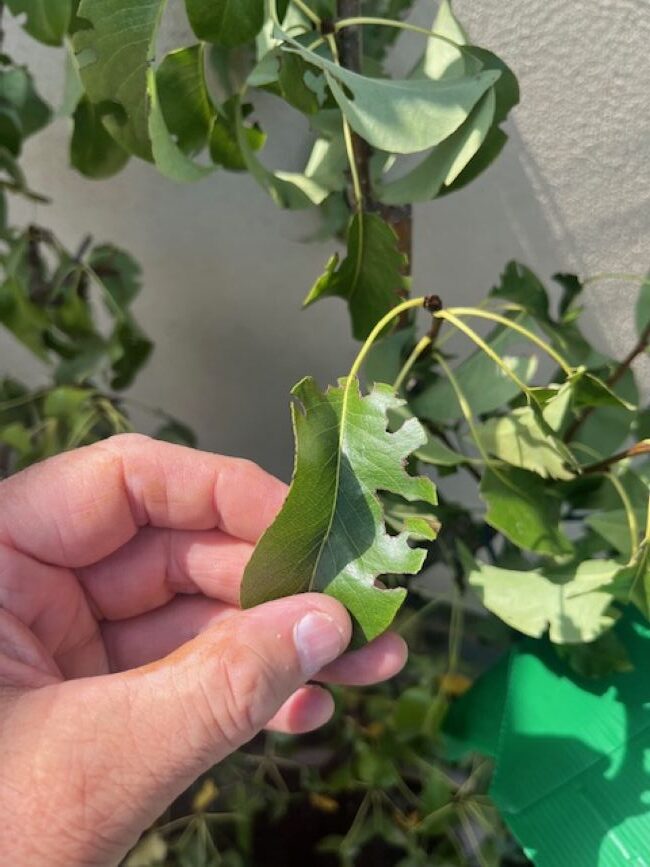Vine Weevil Damage – Identification, Causes, and Control

Vine weevil (Otiorhynchus sulcatus) is one of the most destructive pests found in UK gardens, capable of damaging over 100 different plants. In recent years, the GardenAdvice team has noticed an increase in vine weevil activity, particularly in potted plants and gardens using certain compost types.
How to Identify Vine Weevil Damage
Adult vine weevils feed at night, chewing distinctive notches along the outer edges of leaves. The damage is often irregular but confined to the leaf margins, leaving the rest of the leaf intact. While this adult feeding can look unsightly, the more serious damage is caused by the larvae underground — creamy white grubs that feed on plant roots, often killing plants outright.
Why the Problem is Increasing
Over the last few years, GardenAdvice staff have observed that vine weevil problems are more common in:
- Potted plants grown in eco composts
- Gardens with heavy clay soils that have been over-amended with compost
When too much organic matter is added to clay soil, it can open up the soil structure excessively. This creates the ideal environment for vine weevils to move freely through the soil and attack plant roots. Similarly, some eco composts, while excellent for sustainability, can provide a looser, more hospitable habitat for these pests.
Recommended Compost Choices
To make conditions less attractive to vine weevils:
- Use a John Innes soil-based compost for pots and containers — it is denser and less favourable to vine weevil larvae.
- For outdoor planters, create a blend of topsoil, John Innes compost, and an additional organic matter source such as mushroom compost or well-rotted garden compost. This mix provides good growing conditions for plants but is less supportive of vine weevil populations.
Control Methods
The most effective control is to target both the adult weevils and the larvae:
1. Physical Removal of Adults
- Inspect plants at night with a torch and hand-pick adult weevils, dropping them into soapy water.
2. Biological Control – Nematodes
- Apply beneficial nematodes (Steinernema kraussei or Heterorhabditis bacteriophora) to the soil or compost. These microscopic worms actively seek out and kill vine weevil larvae.
- Best applied in late summer to mid-autumn and again in spring, following the packet instructions for moisture and temperature requirements.
3. Preventative Steps
- Avoid over-amending clay soils with too much compost.
- Switch from loose, peat-free eco compost to soil-based compost mixes for susceptible plants.
- Keep container-grown plants healthy and avoid overwatering, as stressed plants are more susceptible to vine weevil damage.
- By combining correct compost choice, physical adult removal, and targeted nematode treatments, gardeners can significantly reduce vine weevil damage. Preventing the pest from finding ideal habitats in the first place — particularly in pots and amended clay soils — is a key part of long-term control.